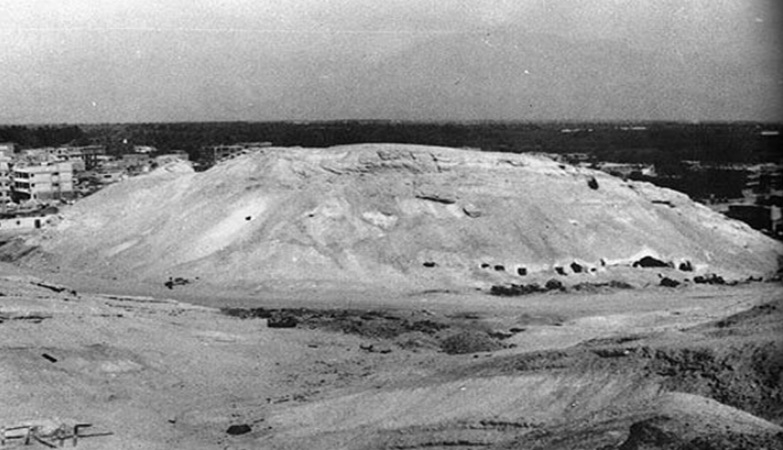Lepsius Number One Pyramid

Abu Rawash is only a few kilometers north of Giza, one of ancient Egypt's most well known archaeology sites, but it is rarely visited because there is really very little to see. Most of the monuments built there are in complete ruin. The best known of these is a pyramid built by the 4th Dynasty king, Djedefre (Radjedef). Then, perhaps, the second most noticeable ruins are those of the structure that the Lepsius expedition believed was a pyramid. As the northernmost of any pyramid ruins discovered at that time, they assigned it the number one. This is a mudbrick structure built in the easternmost hills promontory.
It is considered one of the smallest step pyramids (known as the seven small pyramids) which stretch from Seila to Elephantine, yet, unlike the provincial pyramids seem to have little or no substructure; Lepsius Number One does have an internal substructure. The pyramid of Lepsius number one was built by stacking layers of mudbrick over a core or rock, much of the mudbrick had been stripped away from its position, but it is estimated that it was between one hundred and one hundred and fifty meters high with a base length of around two hundred and fifteen meters making it comparable in size to the unfinished pyramid at Zawiyet el Aryan. A sloping corridor was cut into the rock which led down to a small square burial chamber.
The Egyptologist Swelim has attributed it to Huni of third dynasty of the Old Kingdom, for whom no other burial pyramid has so far been located. He considered that it was a step pyramid built from mudbrick on top of a core or rock. This is disputed by another Egyptologist, Verner, who notes that unlike other pyramids it sits at the edge of the flood plain rather than at a safe elevation. He also notes that there are a number of rock cut tombs cut into the rock that Swelim considers to be the core of the pyramid and these are thought to date to the fifth and sixth dynasties of the Old Kingdom. Despite Verner's reservations, Huni is generally considered to be the most likely candidate with the only other candidate proposed being Neferka (Neferkare of dynasty two of the Early Period).
